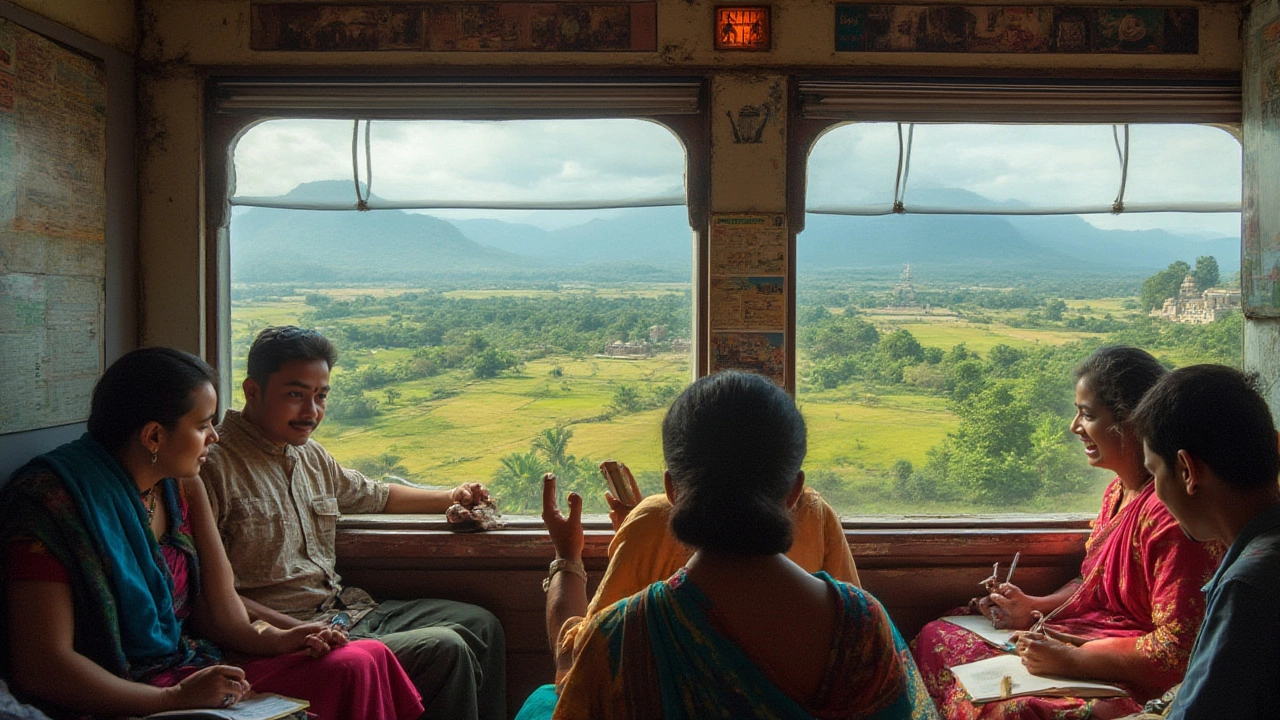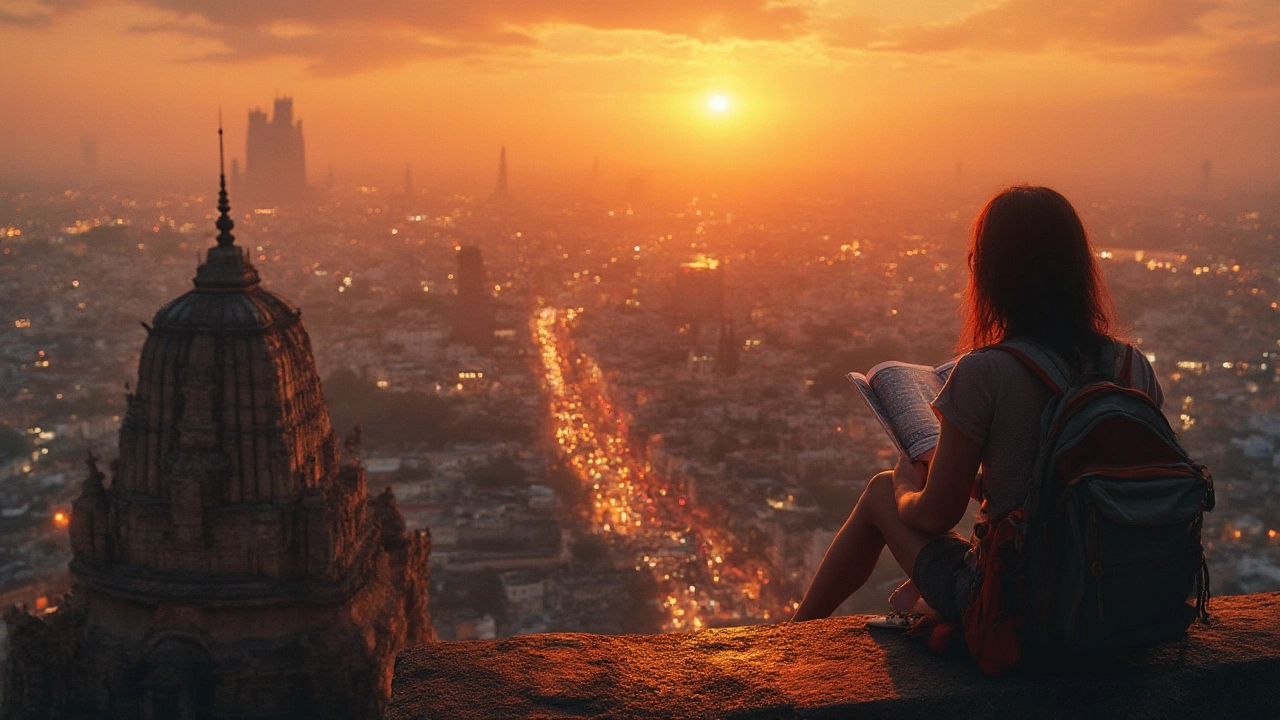Days Needed to Travel India: The Real Timeline Explained

- Jul, 12 2025
- 0 Comments
- Aaron Blackwood
You’d think you could just plug India into your calendar like another trip. But India? She chews up your plans and laughs as she hands them back scribbled with color. One look at a map and you get it—this country’s less like a checklist and more like a puzzle that changes shape every time you think you’ve finished. The real stumper? How many days do you need to travel India and actually soak it in? It’s both more, and less, than you think.
How Big is Too Big? India’s Scope and What That Means for Your Timeline
Picture this: India is the seventh largest country on the planet. It stretches from snow-smothered peaks in the north to palm-studded beaches down south, and every inch between churns with cities, forests, deserts, and waterfalls. You’ve got 28 states, more languages than you’d care to count, and a culture so layered that even lifelong locals always seem to be discovering new corners.
Let’s get the numbers on the table. India covers about 3.3 million square kilometers. Traveling just between Delhi and Mumbai—two of its biggest, flashiest cities—takes almost two hours by plane or 24 hours on a train. And that’s not even accounting for the winding roads of the Himalayas, the wilderness of the northeast, or the maze of Kerala’s backwaters.
Tourists love the Golden Triangle (Delhi, Agra, Jaipur), which is a tidy taste of India. That route alone gobbles up a week if you want more than a frantic passport stamp tour. Throw in Varanasi for the Ganges, or Rajasthan for desert fortresses, or Goa for beaches, and suddenly, you’re well past ten days—and still just scratching the surface.
Then there’s the weather. Monsoon season rolls over the country from June to September, swamping the south but turning the Himalayas into a dangerous beauty. Winters (November to February) are gentle in most places but can freeze your bones in the north. Summers, meanwhile, can fry eggs on car hoods in Rajasthan.
Factor in distances, local festivals, regional quirks, and the sheer unpredictable pace of life—and you start to see that there’s no neat answer. Trying to ‘cover’ India in one go makes as much sense as trying to eat a whole buffet in a weekend.

Crafting Your India Itinerary: Realistic Routes, Essential Stops, and the Magic Number
Alright, let’s get down to brass tacks. If you want to skim the main highlights, you can technically do a whirlwind tour in 7-10 days. Flights jump between big cities in hours. But will you actually feel what India’s about? Let’s be honest—you’ll spend half your time dazed by jet lag and the other half snapping photos from moving vehicles.
The Golden Triangle is the classic ‘first-timer’ loop: Delhi’s madness, Agra’s Taj Mahal, Jaipur’s pink charm. Want a simple, memorable taste? That’s your week, right there. Add a couple of days for travel and you’re looking at 8-9 days, minimum.
Most travelers, though, want more. If you’re the kind who can’t help but chase mountains, Varanasi’s otherworldly river rituals, Kerala’s floating houses, or the wild chaos of Kolkata, you’re in for at least 2-3 weeks. This is the sweet spot. Two weeks lets you breathe between stops. Twenty-one days gives you wiggle room for surprise finds—think last-minute desert camel rides, temple festivals, or food hunts.
Here’s a practical example. A 15-day loop might look like:
- Delhi (2 days): Soak up Old Delhi’s food and the Red Fort
- Agra (1 day): Taj Mahal and the nearby Agra Fort
- Jaipur (2 days): Amber Fort, street markets, city palaces
- Varanasi (2 days): Ghats, Ganga aarti, Sarnath trip
- Khajuraho or Orchha (2 days): Temples, village life
- Mumbai (2 days): Markets, Bollywood buzz, Gateway of India
- Goa or Kerala (4 days): Beaches or backwaters, rest and slow travel
You’ll notice this skips out huge swathes: Rajasthan’s desert towns, Ladakh’s wild north, Northeast’s green lunacy, Sundarbans tiger territory, even the Andaman islands. Each is a trip on its own.
Some travel veterans swear by the 4-6 week rule. This is ideal if you have time to burn. You wander deeper—maybe you spend a week hiking in Himachal Pradesh, linger for days in Tamil Nadu’s ancient temples, or lose time hopping beaches along the Konkan coast. Long-distance trains (iconic in themselves) become a relaxed journey, not a race.
Budget and patience matter. Backpackers can loop through states slower, finding cheap guesthouses or local busses. If you move fast and fly, you’ll obviously tick off more stops—but at a price. Every mode of travel in India, from tuk-tuks to trains to internal flights, teaches you something about the country. Sometimes the journey is half the experience, like waking up at dawn to kids selling chai in a station.
Keep in mind, India isn’t really about the sights. It’s the pacing, the surprise conversations, the way a cup of chai can change your day. You can see the Taj Mahal in an hour—but understanding what she means to people will take a lifetime.

Essential Tips for Maximizing Your Trip (and Your Days) in India
Borrow a trick from experienced India hands: stop trying to “finish” India. You can’t. What you can do is pick a region or a vibe for each trip. Want mythology and ritual? Stick to Varanasi, Khajuraho, and South India’s sacred cities. Looking for wild nature? The northeast, the Himalayas, Madhya Pradesh’s tiger reserves or Kerala’s lush green jungles are calling. Beach bum? Settle in Goa or cruise Kerala’s backwaters.
Pack with purpose. India’s temperature swings are legendary. Layers are your best friend. If you crisscross north and south in a single trip, expect everything from cool hill station evenings to sweaty afternoons in the south.
Health: Get your shots, carry basic meds. Delhi belly is an old cliche, but it’s annoying enough to cost you days if you’re unlucky. Research food safety—street food can be fantastic, but use your nose and stick to busy stalls. Carry hand sanitizer everywhere. Bottled water is non-negotiable unless you have a tried-and-tested filter.
Move smart. Trains connect most towns and are a must for the true experience. Sleeper class is a shock to the senses but shows you real India. Bookings open months in advance and fill fast on popular routes. Try an overnight train at least once. Domestic flights shave off time but miss the in-between texture that makes every journey worthwhile.
Scams and surprises: they exist, like anywhere. Stay friendly but not naïve. Say “no” with a smile. Haggle at markets—don’t be shy. Apps like Ola, Uber, and IRCTC (for trains) are lifesavers. Google Translate works but learning “namaste” and a few pleasantries goes a long way.
Plan downtime. India doesn’t unfold on command. You’ll need hours to just sit in a chai shop, watching life swirl by. Unexpected delays—a festival parade, a broken-down bus, a friendly tea vendor—add up over days. Build in slack.
Must-see places for first-timers (if you have around 2-3 weeks):
- Taj Mahal: Yes, it really is worth it
- Jaipur, Udaipur or Jodhpur: For Rajput palaces and city color
- Kerala backwaters: Day or overnight houseboats for peace
- Himalayas: Shimla, Dharamshala, or Rishikesh for mountain air
- Varanasi: The most intense and sacred riverside city
- Mumbai or Kolkata: For urban pulse and colonial history
Open secret: sometimes, picking fewer places and digging in is smarter than the “see everything” strategy. Instead of six cities in two weeks, try three, and watch how much fuller your days become.
And if you fall for India—as plenty do—you’ll leave with a list of what you’ll come back to see next time. Because there will always be a next time. You could spend your whole life here and never run out of new journeys. That’s the magic of travel India: she’s bigger, deeper, and more surprising than your schedule can ever fit.